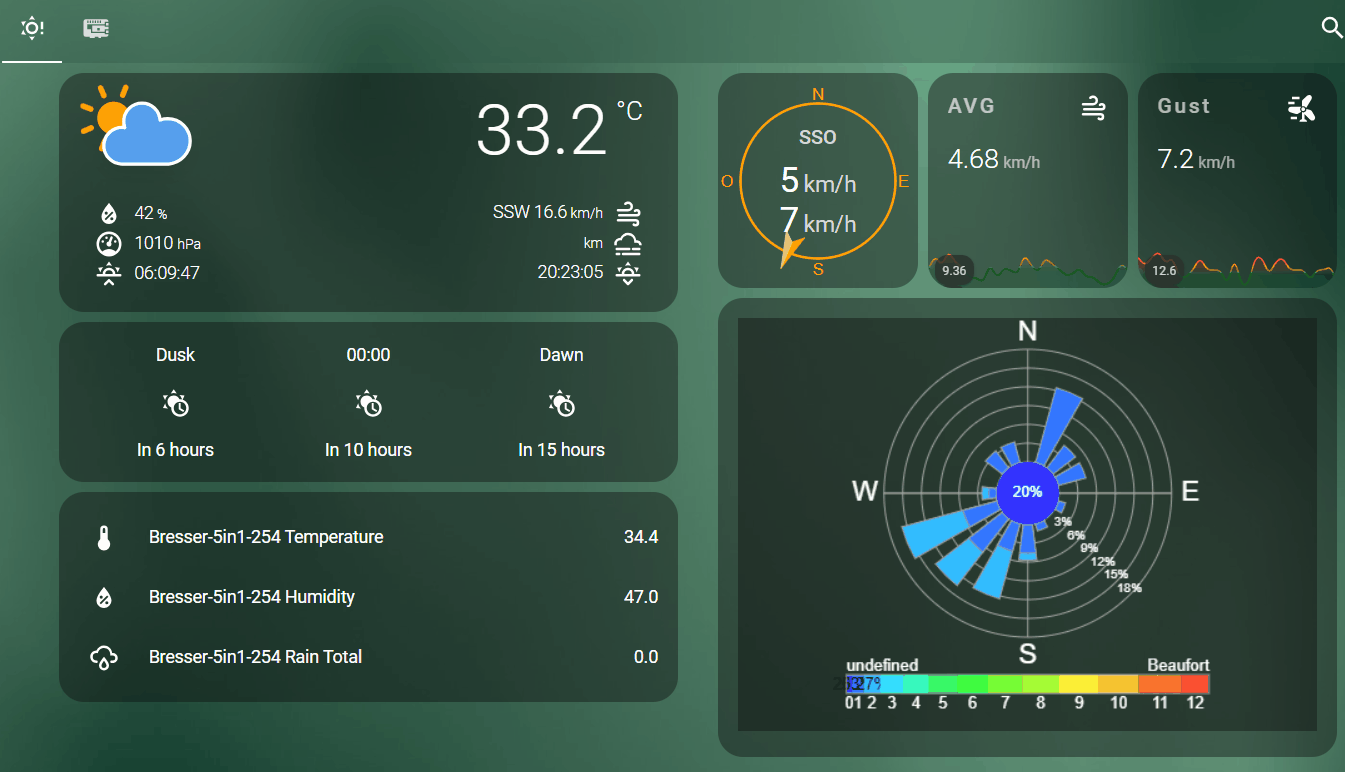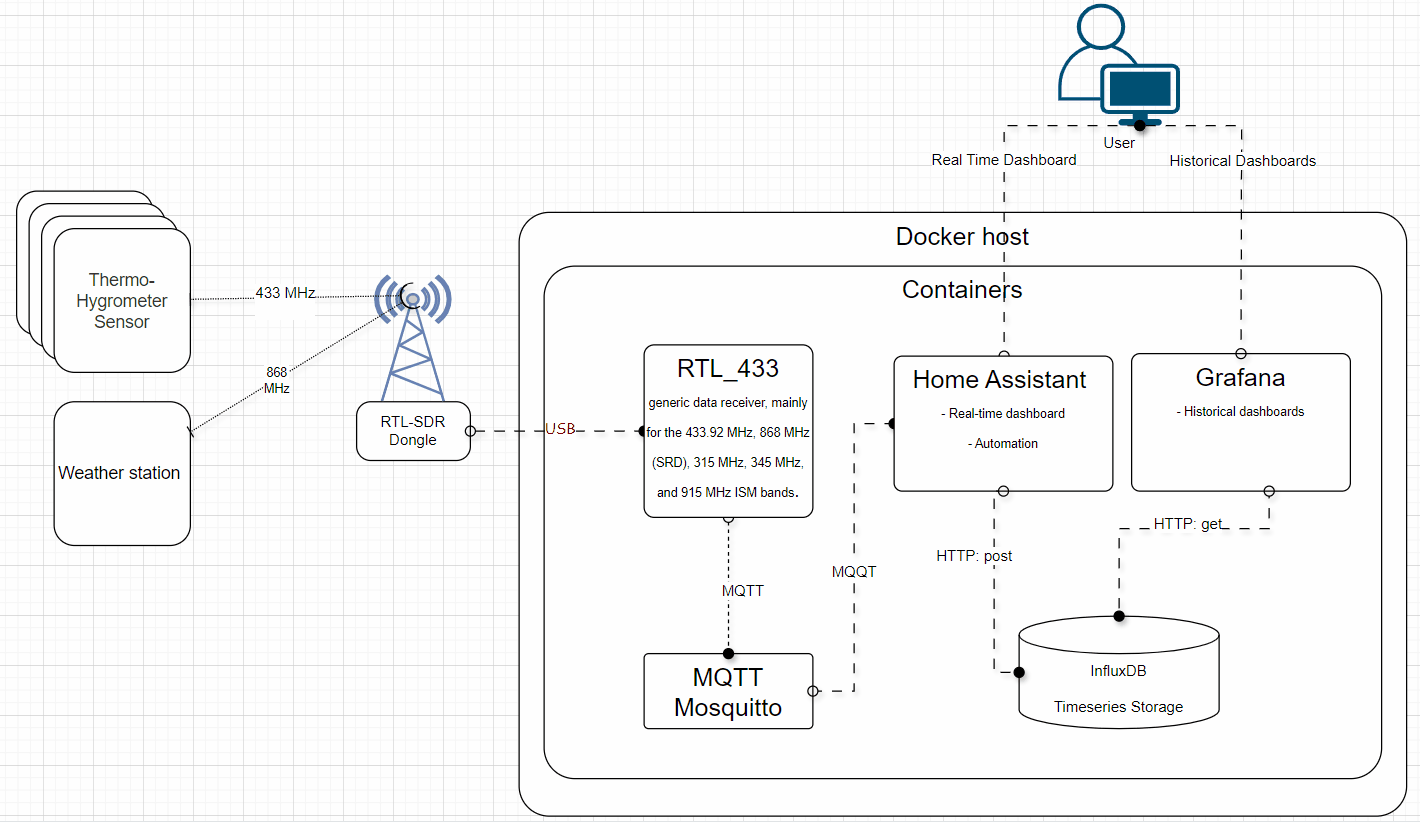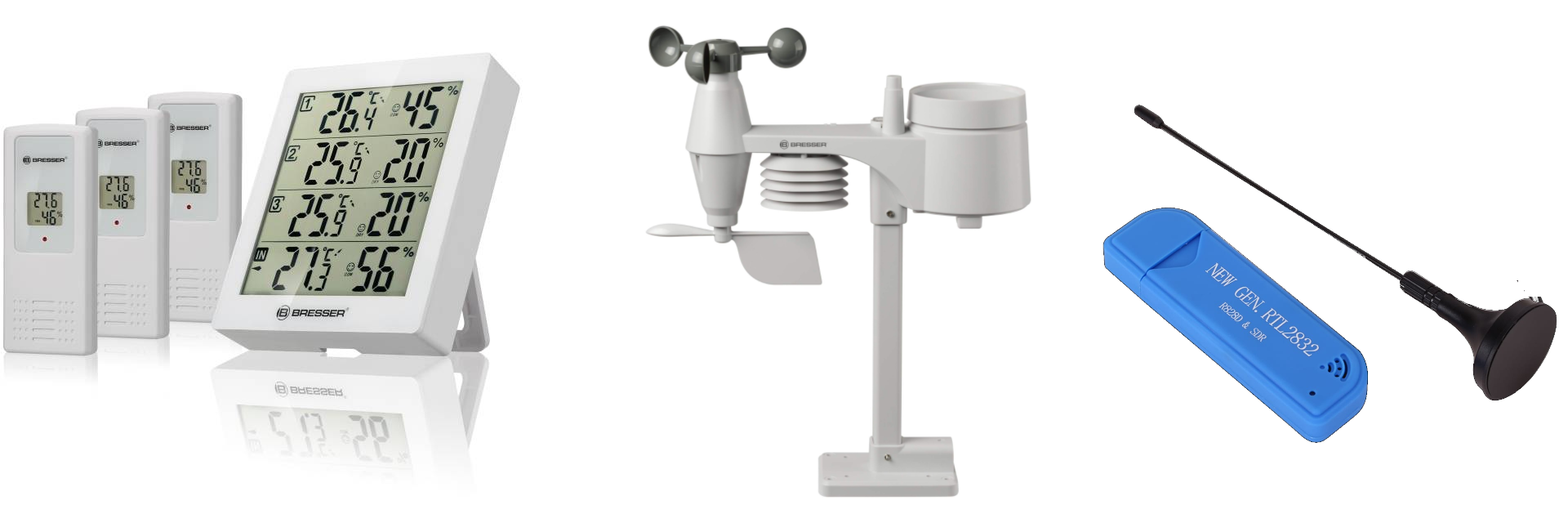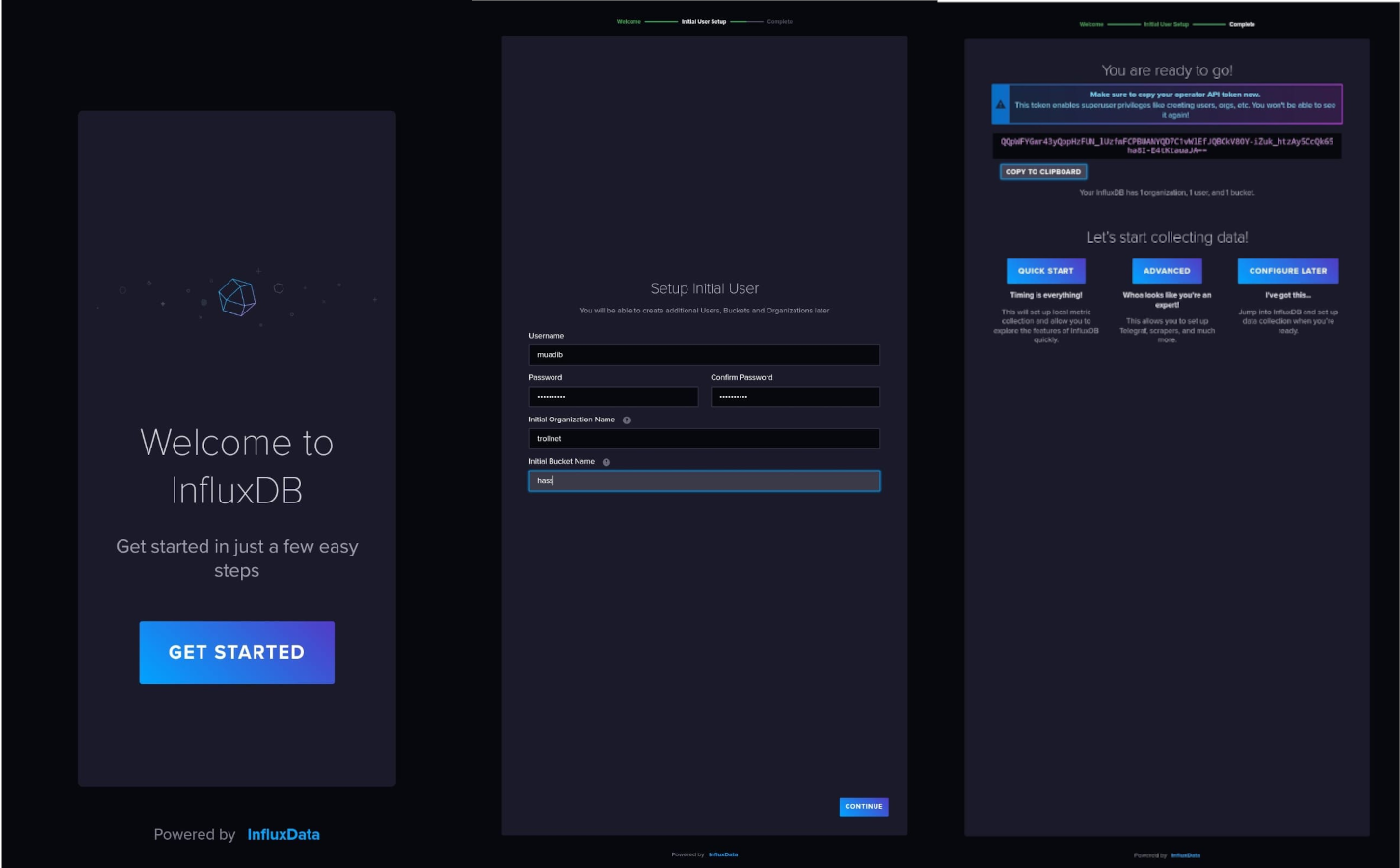The Day I Became a Weather Wizard 🌩️🧙♂️
Want to outsmart your local weatherman with cool gadgets and tech wizardry? 🧙♂️🪄 Grab your wizard hat and staff because I’m about to show you how I set up my own weather station using a Bresser Weather Center 5-in-1, a radio receiver, and a bunch of software tools that made me feel like a tech overlord. 🌦️📡💻👑
Scope
Our grand quest includes stopping the system irrigation when it rains and managing the thermostat based on the outside temperature and room temperatures.
In the realm of home automation, only your imagination sets the boundaries.
SPOILER: We’ll achieve all this by the end of the tutorial!

High-Level System Overview

The Hardware 🛠️

The Weather Sensors
First up, meet the star of the show, the Bresser Weather Center 5-in-1. It’s not just a fancy name; it’s a fancy gadget listed in the prestigious rtl_433 GitHub repo.
For more details, check it out here.
Room Sensors
We’re also using some room sensors to keep track of indoor temperatures and humidity: Bresser Thermo Hygrometer Quadro.
A Radio Receiver
To catch those sweet 433 MHz or 868,3 MHz signals from the weather station, I dusted off an old radio receiver.
Think of it as bringing an old friend back to the spotlight.
(And by “old friend,” I mean a piece of tech I had lying around from a previous project.)
Something to Run the Show
To make all this magic happen, I needed something robust to run Home Assistant, Mosquitto, InfluxDB, and Grafana. You know, the usual suspects in the smart home scene.
Setting Up the Weather Station
Mounting the weather station was like setting up a fancy birdhouse, except this one tells you when to carry an umbrella.
Once mounted, it started beaming data like a weather-obsessed R2-D2. Now, to catch those signals!
Setting Up Home Assistant
Follow this guide to get Home Assistant up and running.
Once you’ve got it set up, you’re halfway to becoming a weather oracle.
A Quick Dive into RTL-SDR
RTL-SDR is the superhero we need but don’t deserve. Originally created for decoding HDTV signals with the RTL2832U chipset from RealTek, it now serves a higher purpose: letting us eavesdrop on RF signals. From weather stations to tire pressure sensors, if it’s on 433 MHz, rtl_433 can hear it.
Docker Compose to the Rescue 🐳
Home Assistant, Mosquitto, and PostgreSQL
Here’s the secret sauce to run Home Assistant, Mosquitto, and PostgreSQL using Docker Compose:
This section defines each service (container) that makes up the application.
Here’s an explanation of your Docker Compose file with comments:
1 | version: '3.9' # Specifies the version of the Docker Compose file format |
Key Points:
- version: Specifies the version of the Docker Compose file format.
- services: Lists all the services to be managed by Docker Compose.
- container_name: Sets a custom name for the container.
- image: Defines the Docker image to use for the container.
- volumes: Mounts directories from the host to the container for persistent storage and configuration.
- restart: Determines the restart policy for the container.
- network_mode: Configures the container to use the host’s network stack directly.
- depends_on: Specifies dependencies between services to control the order of startup.
- ports: Maps ports between the host and the container.
- environment: Sets environment variables for the container.
This configuration sets up a multi-container environment for running Home Assistant along with supporting services like PostgreSQL (database) and Mosquitto (MQTT broker). Each service has its own container with specified configurations, dependencies, and volume mappings to ensure persistent storage and appropriate networking.
Configure Mosquitto
First, let’s set up Mosquitto:
1 | nano /home/muadib/home/mosquitto/mosquitto_conf/mosquitto.conf |
Add the following lines:
This ini configuration file is likely for Mosquitto, an open-source MQTT (Message Queuing Telemetry Transport) broker. Each parameter controls a different aspect of the Mosquitto broker’s behavior. Here’s an explanation of each line, along with comments to describe their purpose:
1 | persistence true |
Summary:
- persistence: Enables the retention of messages and subscriptions.
- persistence_location: Specifies the directory for storing persistent data.
- log_dest: Defines where log messages should be sent.
- log_type: Specifies the type of log messages.
- listener: Configures the network port the broker listens on for incoming connections.
- allow_anonymous: Controls whether anonymous connections are allowed.
- password_file: Points to the file containing user authentication credentials.
These settings help configure the Mosquitto broker to store data persistently, log operational information, listen for incoming MQTT connections on the standard port, and enforce user authentication.
Create the user and set the password:
1 | nano /home/muadib/home/mosquitto/mosquitto_conf/mosquitto.passwd |
Enter your desired username and password in the following format:
1 | username:password |
Spin it up and run this command for the password file encryption:
Command 1: docker-compose up -d
1 | docker-compose up -d |
docker-compose: This is the command to interact with Docker Compose, a tool for defining and running multi-container Docker applications.up: This subcommand tells Docker Compose to build, (re)create, start, and attach to containers for a service.-d: This flag stands for “detached mode,” meaning the containers will run in the background.
Command 2: docker-compose exec mosquitto mosquitto_passwd -U /mosquitto/config/mosquitto.passwd
1 | docker-compose exec mosquitto mosquitto_passwd -U /mosquitto/config/mosquitto.passwd |
docker-compose: Again, this is the command to interact with Docker Compose.exec: This subcommand runs a command in a running service container.mosquitto: The name of the service/container where the command should be executed.mosquitto_passwd: This is the command within the Mosquitto container used to manage Mosquitto password files.-U: This flag updates the password file, re-encrypting any plain text passwords./mosquitto/config/mosquitto.passwd: The path to the Mosquitto password file within the container.
RTL_433 Docker Compose Setup
First, identify the USB device:
1 | sudo ./ports.sh |
This will output something like:
1 | /dev/bus/usb/001/001 - Linux_6.6.31+rpt-rpi-v8_dwc_otg_hcd_DWC_OTG_Controller_3f980000.usb |
Our device is /dev/bus/usb/001/005.
Now, create the Docker Compose file for RTL_433:
1 | version: '3.3' # Specifies the version of the Docker Compose file format |
This configuration sets up a Docker container for the rtl_433 software, which is used for receiving and decoding data from various radio transmitters, and sends the decoded data to an MQTT broker.
In my setup, I needed to scan two frequencies: one for room sensors and one for the weather station.
Fire it up:
1 | docker-compose up |
You’ll see:
1 | rtl-433 | rtl_433 version 23.11 branch at 202311281352 inputs file rtl_tcp RTL-SDR with TLS |
Home Assistant Add-on
Extend the Docker Compose for RTL with this:
1 | rtl_433_autodiscovery: |
This service is required for the Home Assistant discovery feature. Use it on demand when you need to add a new device; otherwise, leave it stopped.
Now, let’s restart and check the Home Assistant devices list. You should see the weather station and the room sensors available.
🌟 Enabling MQTT Integration 🌟
Almost there! 🌈 Just one last thing: turn on the MQTT integration in Home Assistant. 🚀 Zoom over to the integrations page, add MQTT, and watch as your weather station’s data flows in like a boss! 😎📈
And voilà! 🎉 You’ve leveled up to weather guru status, all while chuckling at the old tech you’ve repurposed. Now, go forth and predict the weather like a pro (or at least dazzle your neighbors)! 🧙♂️🌦️
🛠️ Create Your Home Assistant Dashboard 🛠️
Add a dashboard in Home Assistant to display all the juicy data from your weather station and the sensors in each room. 🏠🌡️💧

🌀 InfluxDB 2 Configuration 🌀
Configure InfluxDB with your user, organization, and bucket. Follow the steps in the images below:

Set up your InfluxDB user and organization name, and configure your bucket:

Next, configure Home Assistant:
1 | muadib@zigbee:~ $ sudo nano home/hass/configuration.yaml |
1 | influxdb: |
restart home-assistant.
📊 Grafana Setup 📊
Bind Mounts (Optional) 🚀
If you’re using directories on your host for Grafana’s database or configuration, start the container with a user who has permission to access and write to the directory you map. 🛠️
Find a user’s UID or GID in Unix:
1 | muadib@zigbee:~ $ id -u muadib |
Create an .env file:
1 | UID=1000 |
Ensure the volume mount folder exists and is owned by the desired user/group:
1 | muadib@zigbee:~/hass-docker $ mkdir ../home/grafana |
Configure Grafana and InfluxDB in docker-compose.yml:
1 | grafana: |
Check the logs and restart a single container from the Docker Compose setup:
1 | docker-compose stop -t 1 grafana |
🌐 Add InfluxDB to Grafana 🌐
Configure InfluxDB as a data source in Grafana:
- Open your web browser and go to Grafana’s root URL, usually
http://localhost:3000. 🌐 - On the sign-in page, use
adminfor both username and password. - Click Sign in and change your password when prompted. 🔒
- Go to the data source section and find InfluxDB. 🌟
Generate a new API token in InfluxDB for Grafana:

📈 Install the Wind Rose Plugin 📈
- Clone the plugin repository:
git clone https://github.com/spectraphilic/grafana-windrose.git - Stop the Grafana-Docker container.
- Manually copy the plugin to
/var/lib/grafana/plugins/grafana-windrose. - Restart the Grafana-Docker container and check the plugin settings. 🎨
Install ECharts for advanced visualizations:
1 | install https://github.com/apache/echarts |
🎨 Crafting the Dashboard 🎨
Create your dashboard and visualize the data:

Set up a Grafana variable period as shown above:
1 | environment: |
Design your dashboard like this:

🌬️ Wind and Speed Direction Chart 🌬️
Create the Flux query for wind speed and direction:
1 | speed = from(bucket: "hass") |
Create your business dashboard, use the code option for creating a dashboard:
1 | let wind; |
🌪️ Windrose Visualization 🌪️
Create two queries: one for wind speed and one for wind direction.
Speed Query:
1 | from(bucket: "hass") |
Direction Query:
1 | from(bucket: "hass") |
Select the windrose chart type:

🏆 Conclusion 🏆
Armed with your Bresser Weather Center 5-in-1, a vintage radio receiver, and a sprinkle of software magic, you’ve created a setup that reads, interprets, and displays weather data like a true wizard. 🌟
Seeing real-time weather updates and having your home respond automatically is nothing short of thrilling. 🌦️ So, if you’re up for some weather wizardry, remember: with the right tools and a dash of patience, you too can conjure up some magic. ✨
Happy weather-watching! 🌈🔮